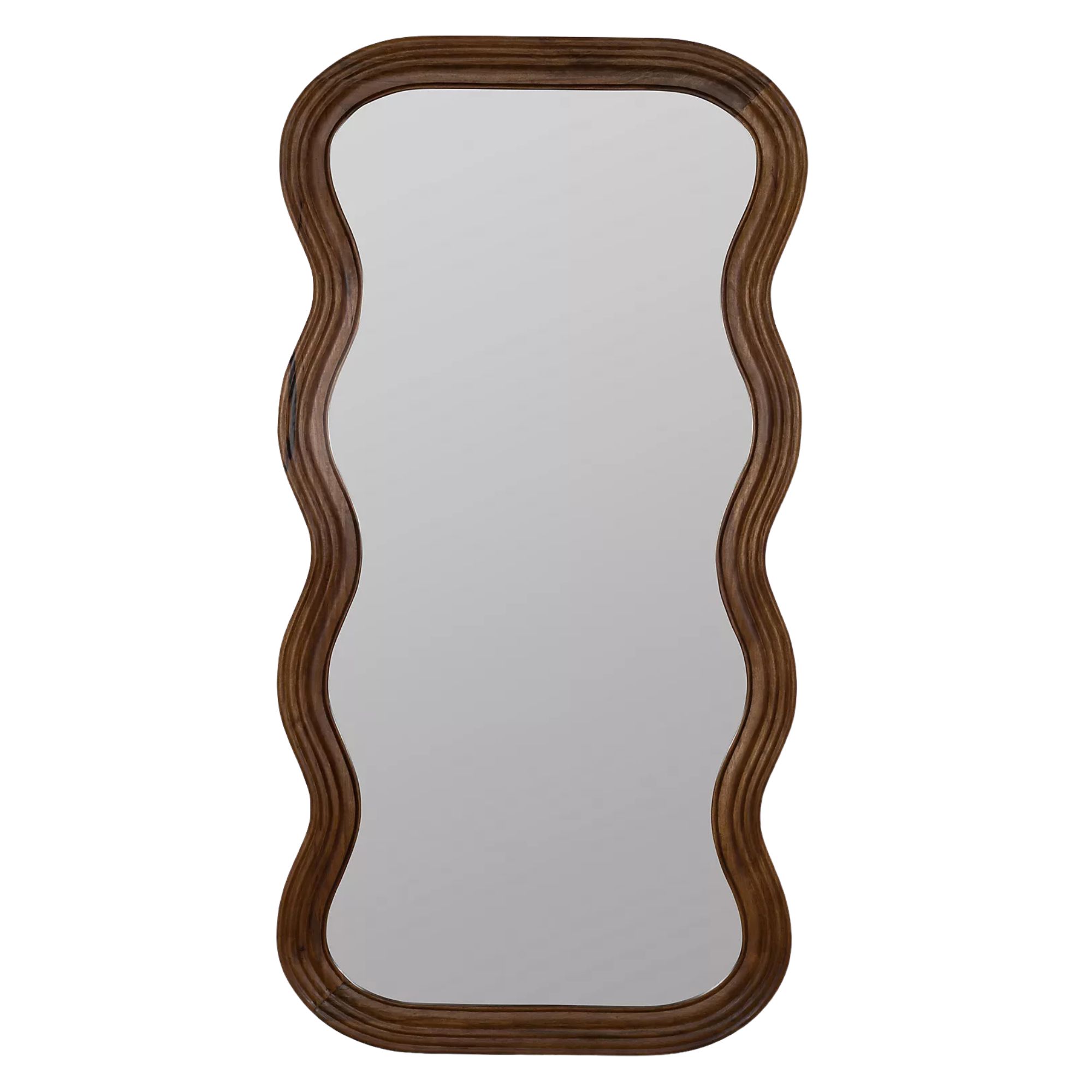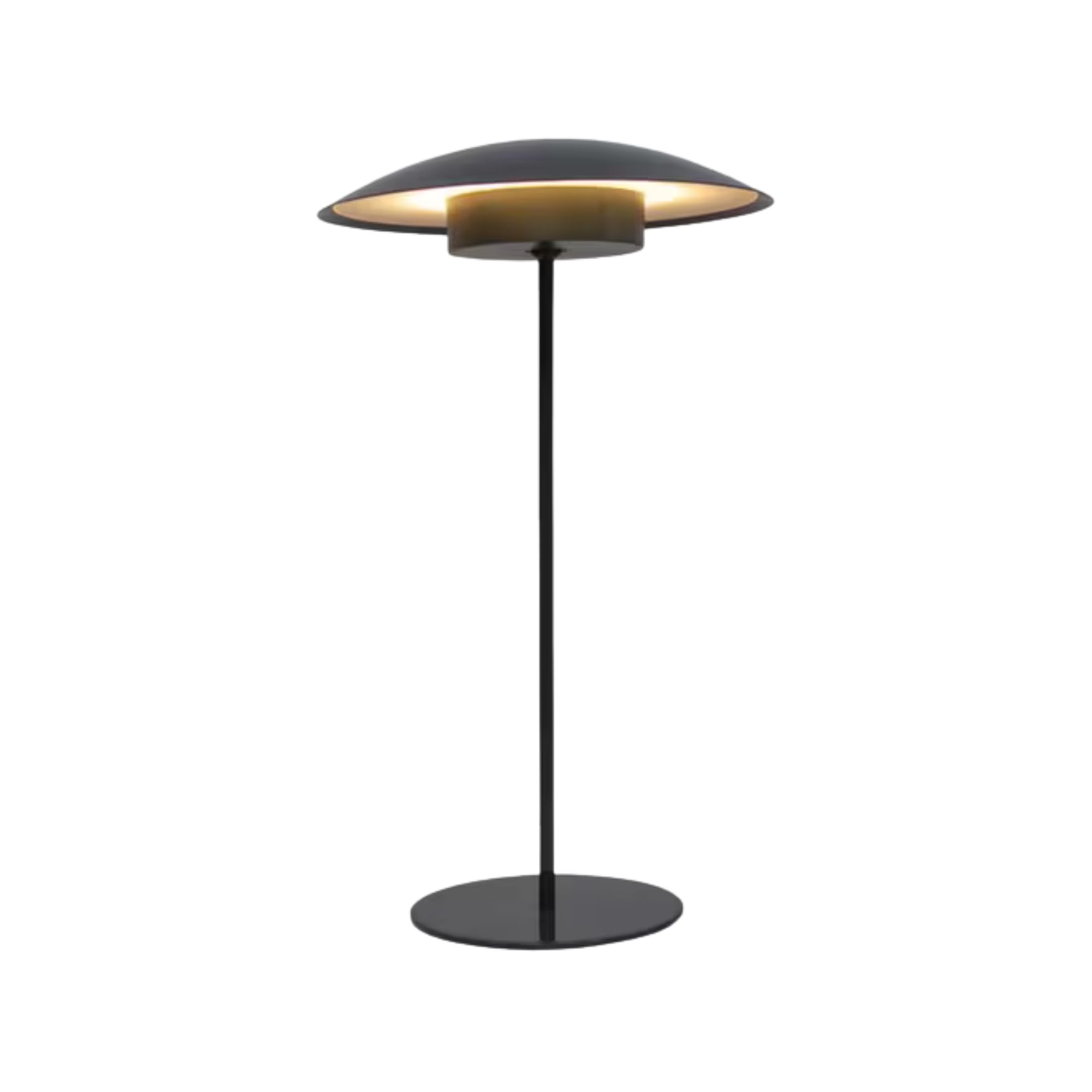18 Modern Living Room Ideas That Feel at the Cutting Edge of Design, Yet Still Soft and Inviting
Sleek, but soft — designers reveal their tricks of the trade when it comes to making modern living rooms feel comfortable
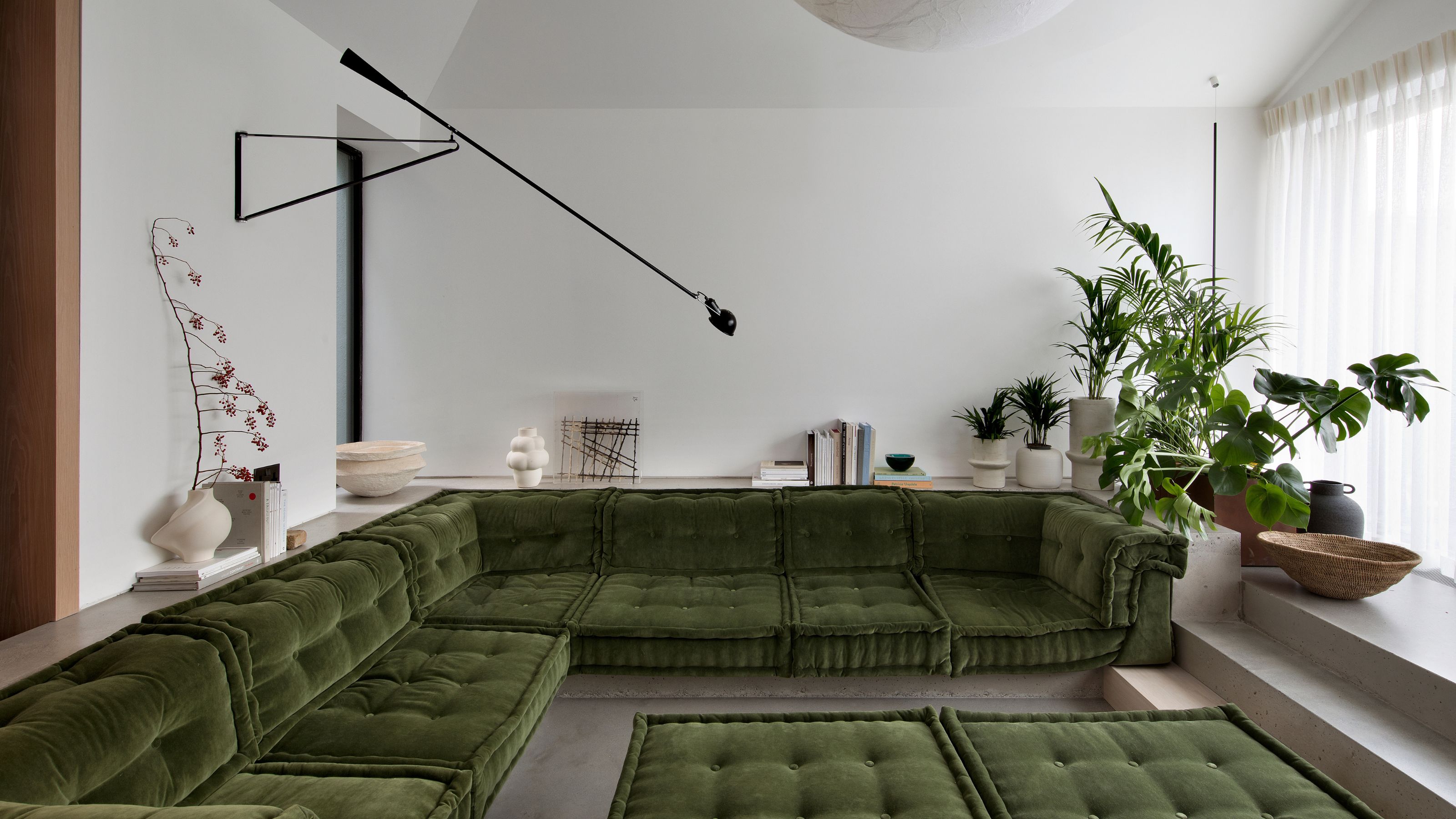

Ellen Finch
Without all the character of more traditionally architectural spaces, it can sometimes be hard to find modern living room ideas that feel just as warm and welcoming. But the key word there is sometimes.
It's certainly not impossible, and whether it's to do with the way you arrange your furniture, your furniture selection itself, or the palettes you choose to decorate the space, there are endless modern living room ideas that designers rely on time and time again.
Below, we've shared some of our favorite ways to keep your modern living space oh-so-stylish, while also creating a space you can recline and relax in.
1. Soften with Touchable Textures
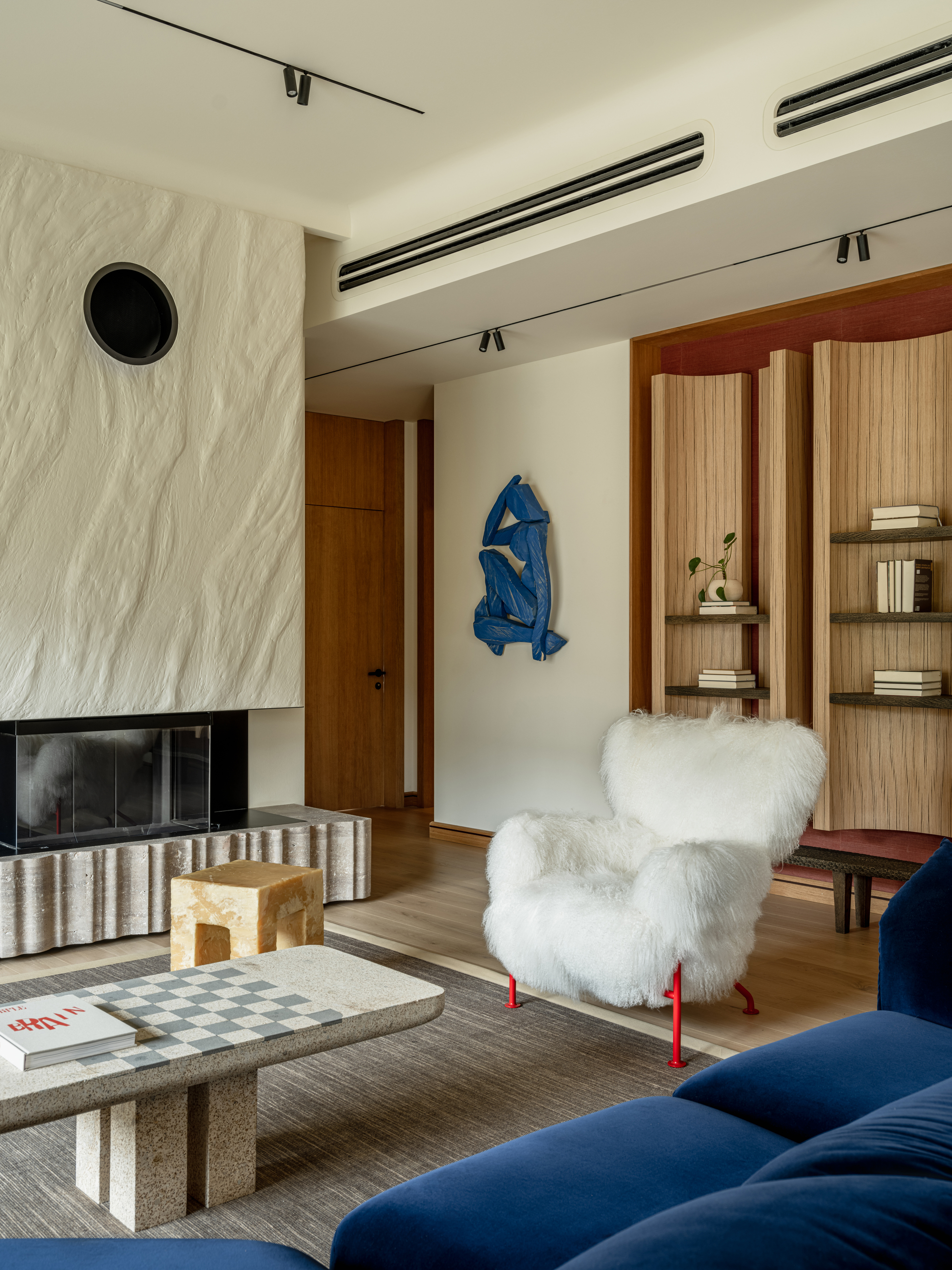
It may be obvious, but the best way to soften a space is by introducing soft textiles.
Layering hard and soft textures means that this modern living room by Moscow-based Studio Breivo never gets boring. "The fireplace was made by a sculptor," says founder Ksenia Breivo. "The mantelpiece is made of travertine and the wall finished with decorative plaster, which imitates the texture of an old mazanka house. The chosen materials and their textures reflect Georgian culture and style."
2. Expand the Space With Mirrored Surfaces
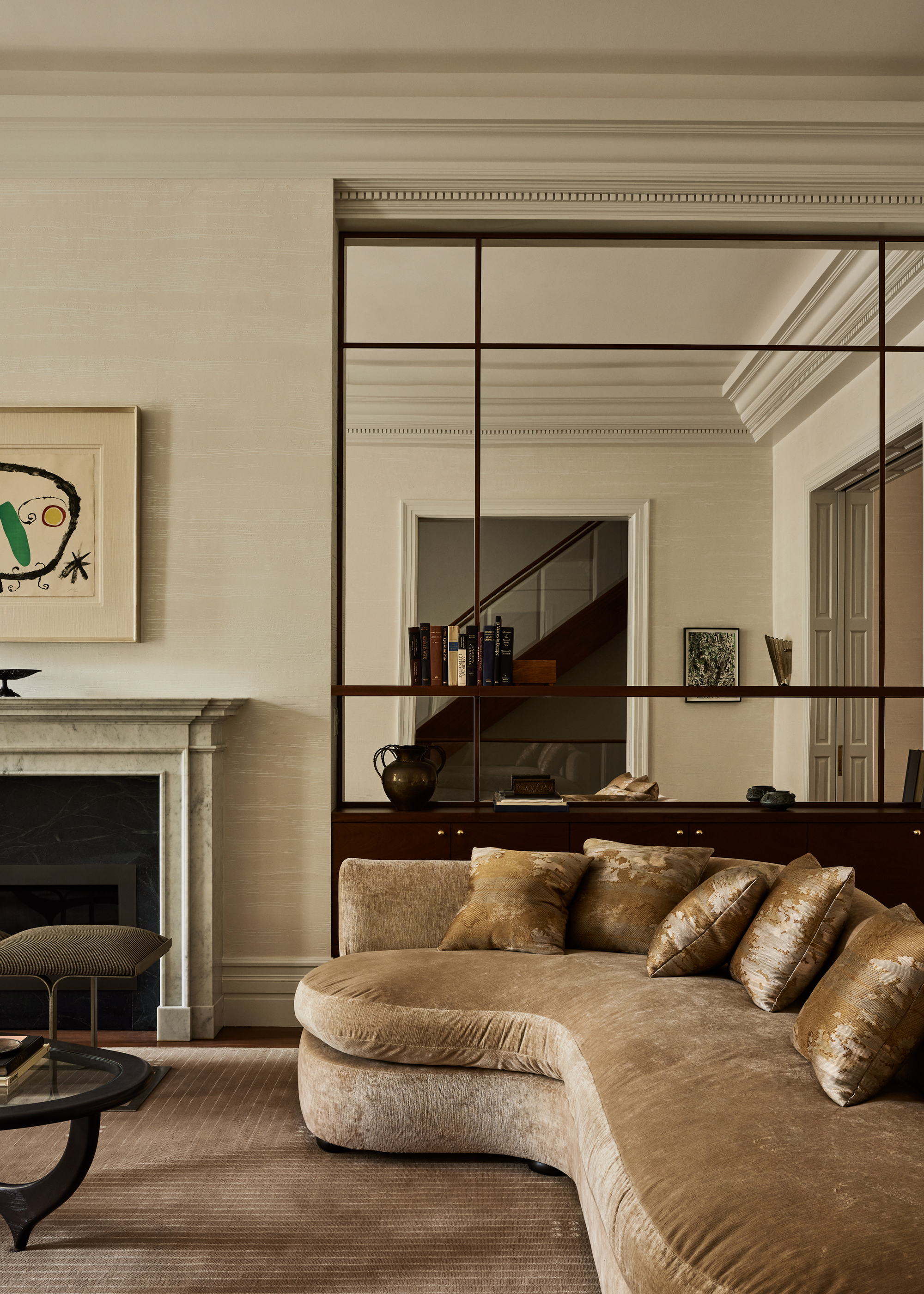
Whether through floor-length designs or permanent reflective surfaces, mirrors make a space look bigger and brighter.
Mirrors double the sense of space in this modern living room by New York studio Husband Wife. "We incorporated mirrored walls into niches to brighten and visually expand the space," the studio says. "A wooden grid brings a graphic structure to the design, while a shelf and cabinet introduce detail, warmth and layering. The mirror reflects the architecture, adding interest from all angles, such as the staircase beyond, without needing to overfill with art."
3. Find Interesting Ways to Apply Paint
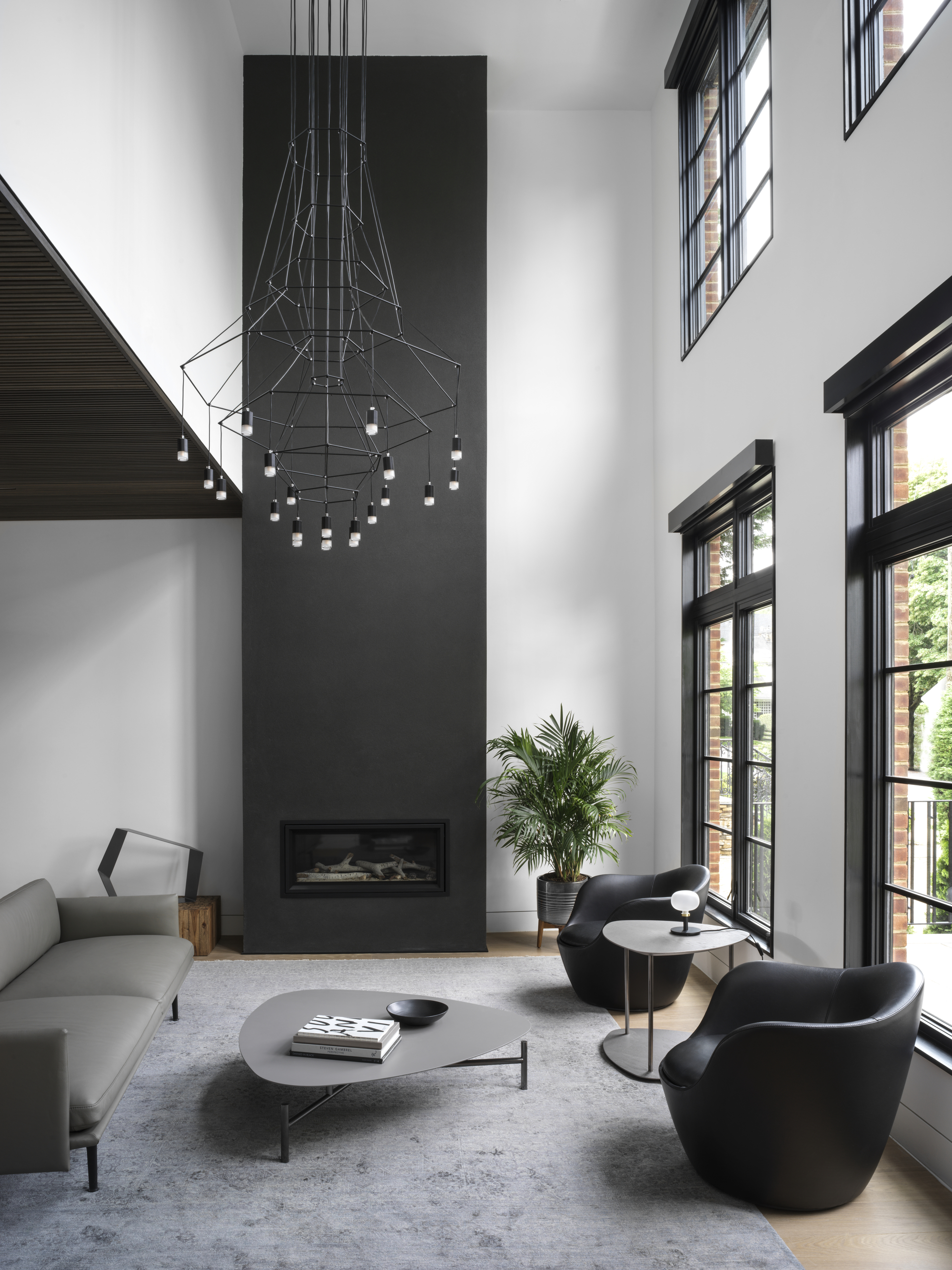
It's not just what color paint, but how you apply it that can add interest to a modern living room.
It's not just a matter of coming up with living room color ideas, but thinking about interesting ways of applying them — and using paint to create optical illusions can completely change the way your room feels.
"We often think that light walls make a space look bigger, but instead, dark colors can make a wall recede," explains Kathryn Findlay of Studio Findlay. "A dark accent wall can give your eye a much-needed place to land, or highlight a focal point."
The Livingetc newsletters are your inside source for what’s shaping interiors now - and what’s next. Discover trend forecasts, smart style ideas, and curated shopping inspiration that brings design to life. Subscribe today and stay ahead of the curve.
The modern living room idea by OAD Interiors, shown above, does exactly that — a painted black accent accentuates the height of the space, making it feel much larger than it actually is.
4. Go Bold With A Rich Red
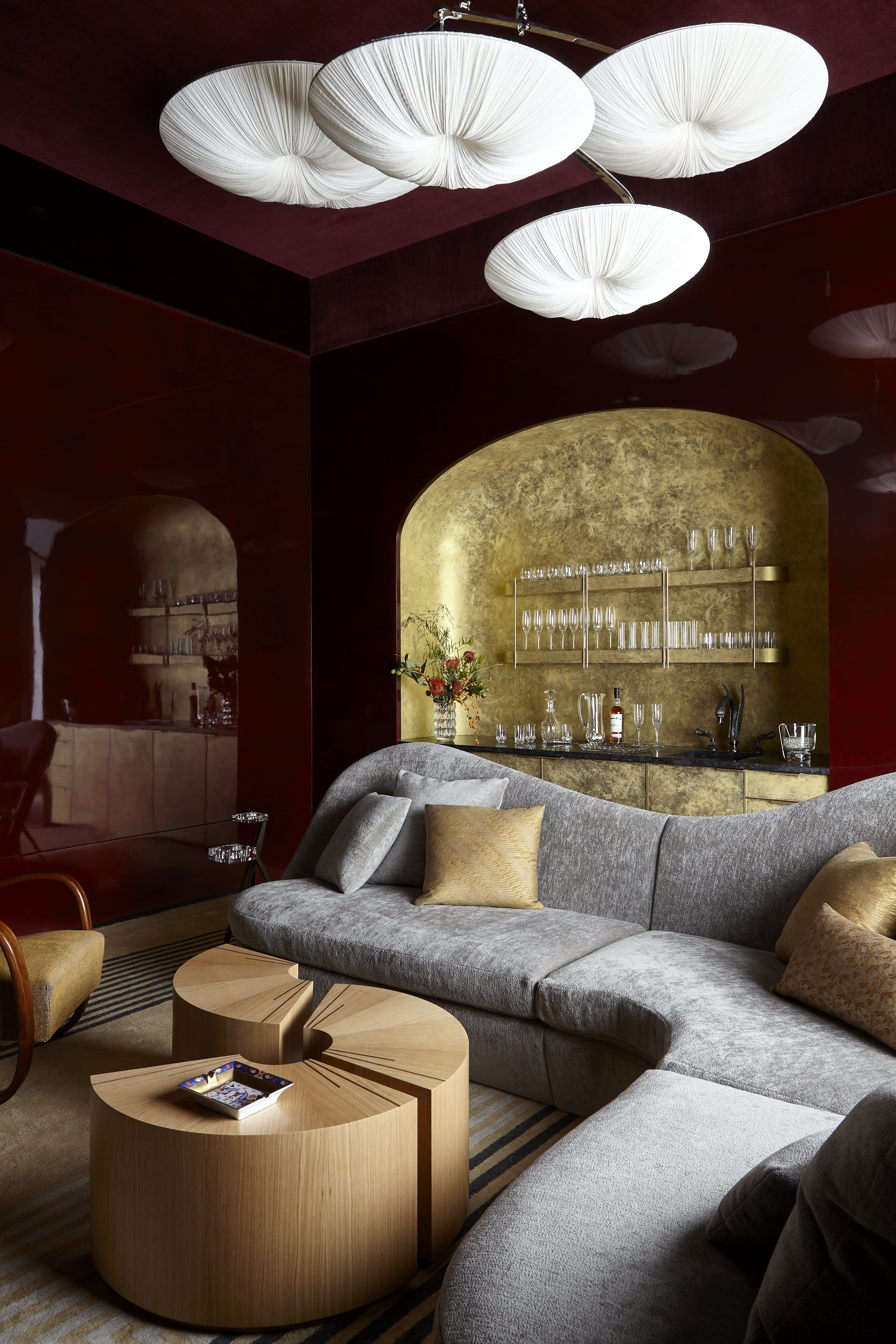
A bold red — especially in a glossy finish — feels effortlessly modern in living spaces, right now.
Reclaiming their crown as a key living room color trend for 2025, red wine tones reign supreme in living rooms — especially those with classic elegance, like this one from Hines Collective. The client brief was for a dark and moody space, the studio says.
"We went through a multi-step process of getting the exact right shade of Oxblood lacquer on the walls and extended a matching velvet across the entire ceiling and window coverings as well. By incorporating a hand applied 'hammered gold' finish at the bar, and customizing an organically shaped sectional, we were able to create a moody and dynamic space that was also enveloping and intimate."
5. A Calming, Cool Blue Palette
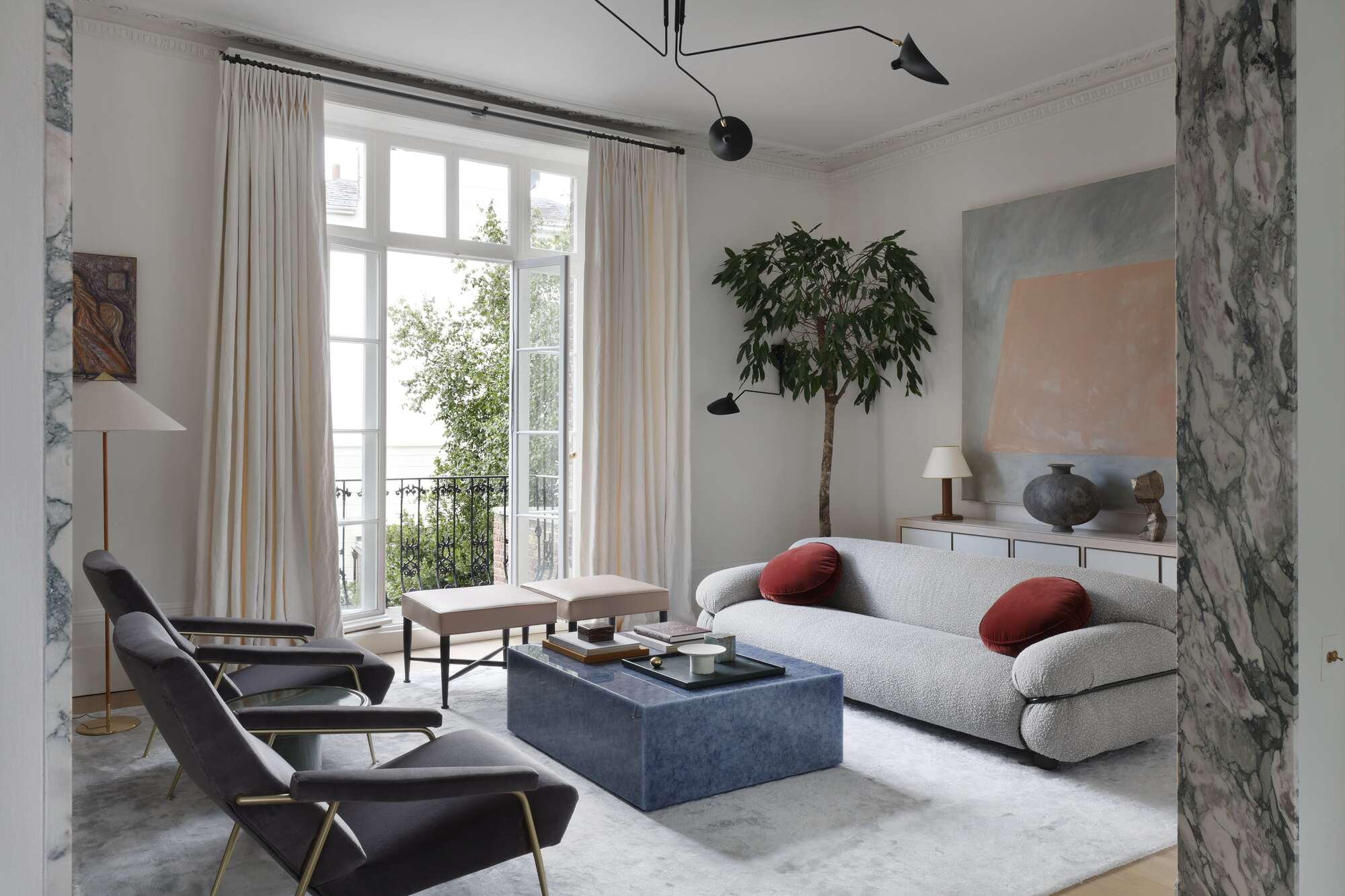
Blues and grays have been popular for decades, because they create modern yet comfortable (and highly liveable) palettes.
Proof that you can venture beyond warm tones and still make your living room feel inviting, this townhouse by Studio Ashby and architect William Smalley features a lounge area accented with soft shades of cool blue.
The secret? Incorporating plenty of texture (the soft rug, the subtly patterned table, the artwork) — and, of course, that surprise pop of rich red (hello, unexpected red theory) through the rounded cushions.
6. Steal Shades That Remind You of Places You Love
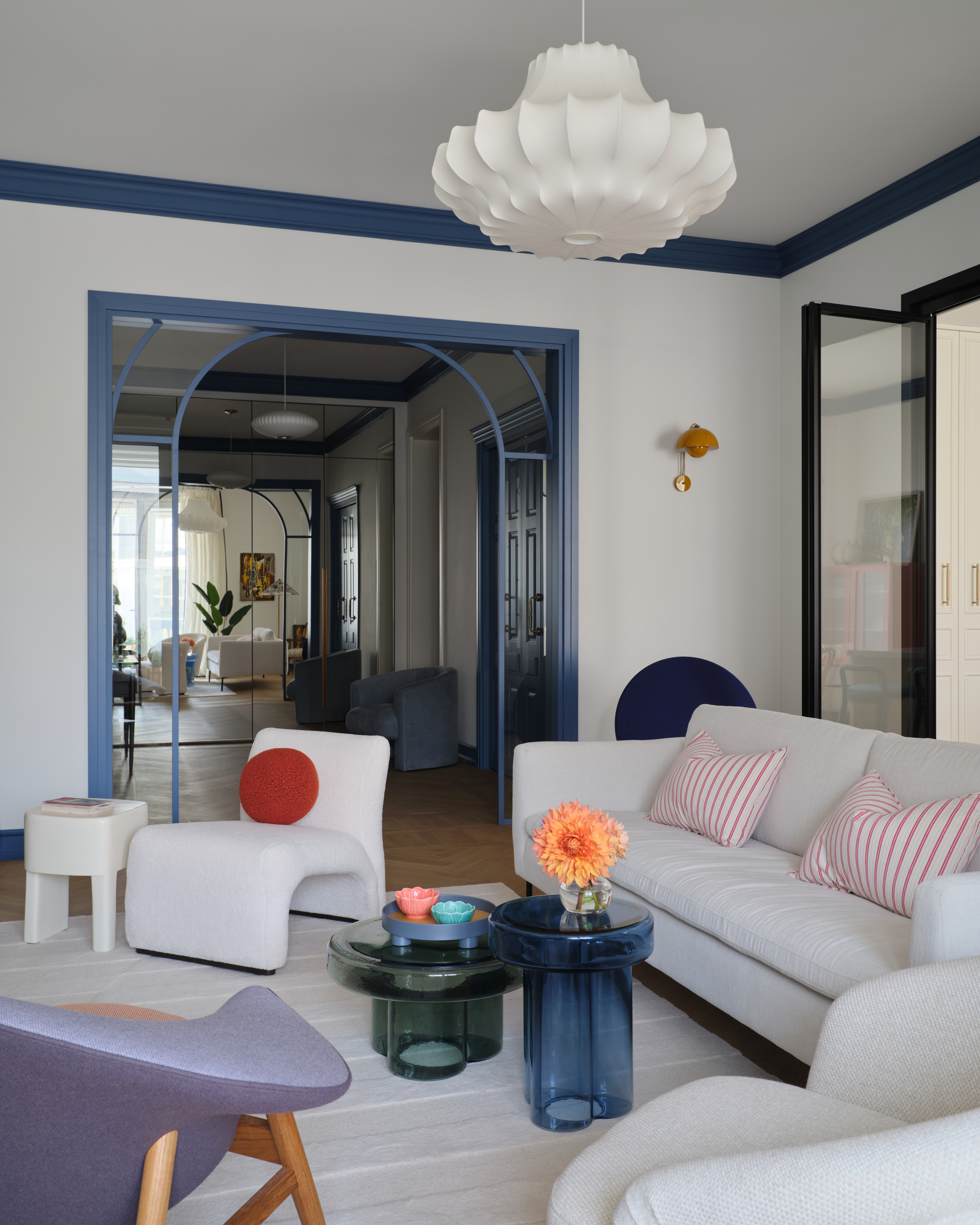
The blue trims in this modern living room were inspired by the traditional colors seen on the streets of Paris.
Color has a strong emotional connection, so when it comes to choosing a shade, pick one that reminds you of a person, place, or thing. Fariz Mamedov, founder of FM Interiors, shares that a lot of the modern living room ideas he came up with for the space shown above were inspired by a trip he took to Paris.
"Since [the client] wanted to bring the spirit of France into the interior — the internal glass doors and their color is a kind of homage to the classic Parisian doors of Ottoman architecture, he explains, adding that the high windows, doors, and facades he saw in Paris also inspired the arch of glass, and "the desire to add elegance, lightness, and classics to the space, but in a more modern interpretation."
7. Give a Neutral Space Interest with Materials
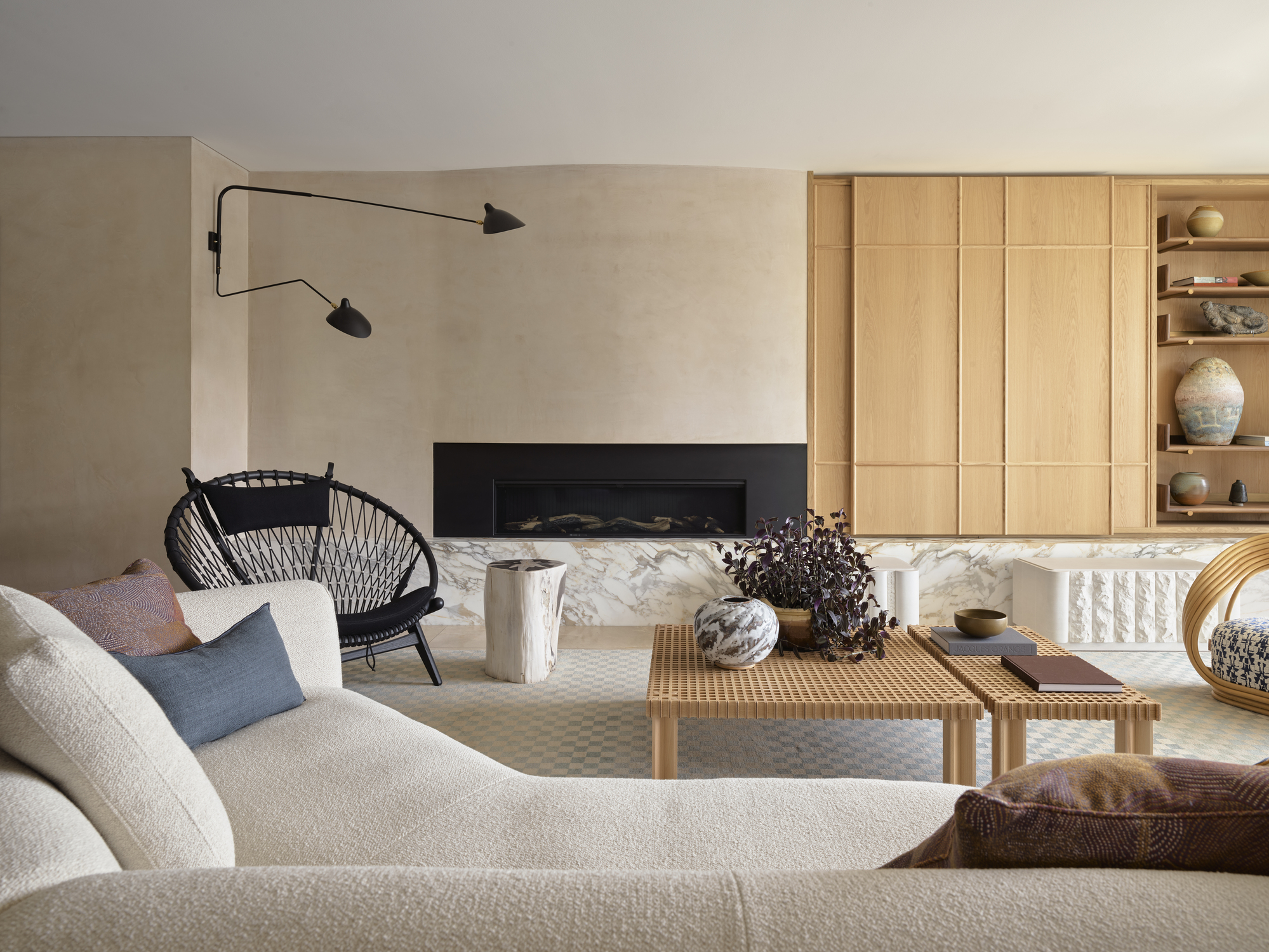
Rather than white or gray, opting for neutral tones adds another layer of warmth to modern living rooms.
A neutral living room palette can be brought to life through a mix of materials, as this scheme by Sydney-based design practice Arent&Pyke — fittingly for a geologist client — shows. "Responding to a request to relieve the apartment’s dominant creams and browns, we introduced expressive stone varieties in the social spaces," the studio explains.
Calacatta Borghini stone beneath the fireplace is complemented by two white sandstone perches by Den Holm. "Enlivening the planes of the stone plinth, the sculptural entities are perfect perches for visiting grandchildren to join conversations," the add. Pale micro-cement plaster walls and an oak screen unit add texture and warmth.

Juliette Arent and Sarah-Jane Pyke, the founders of Sydney-based design practice, Arent&Pyke, have been working together since 2007, when they established their practice. Since then, they've won countless industry awards, and become renowned for a signature style that effortlessly blends unique, colorful aesthetics with practical decisions.
8. Mixing Straight Lines with Soft Curves
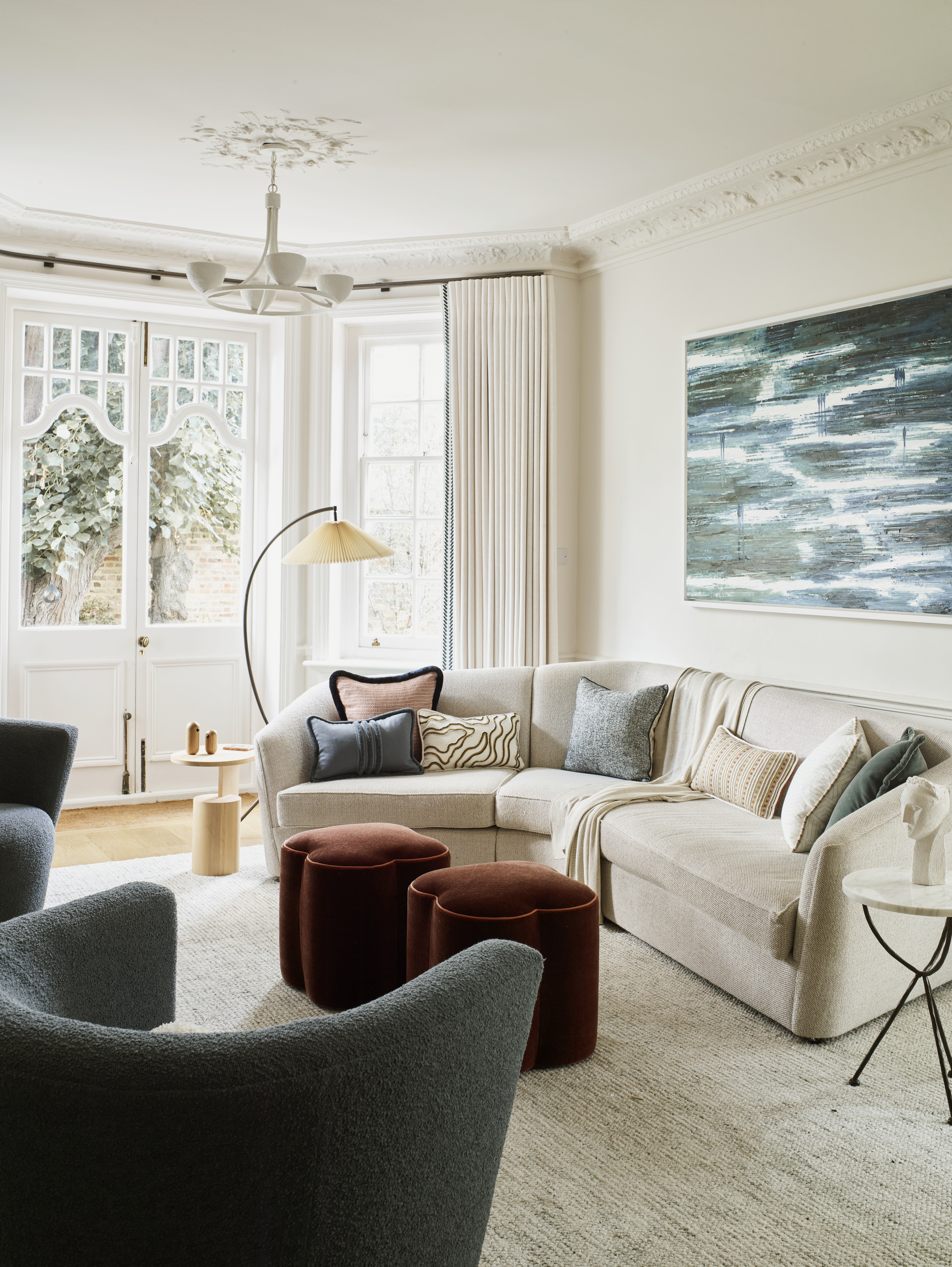
Every straight line should be balanced by a curve, for cohesive and harmonious interiors.
Mixing up living room furniture ideas through shapes can help keep things interesting and modern. In this design by Gunter & Co, an angled sofa stands out against the rounded stools, floor lamp and side tables — but still has enough softened edges to ensure it feels at home in the scheme. The curves also allow the artwork, with its clean, rectangular shape, to stand out as a point of contrast.
9. Keep Furniture Low to Create a Light, Airy Aesthetic
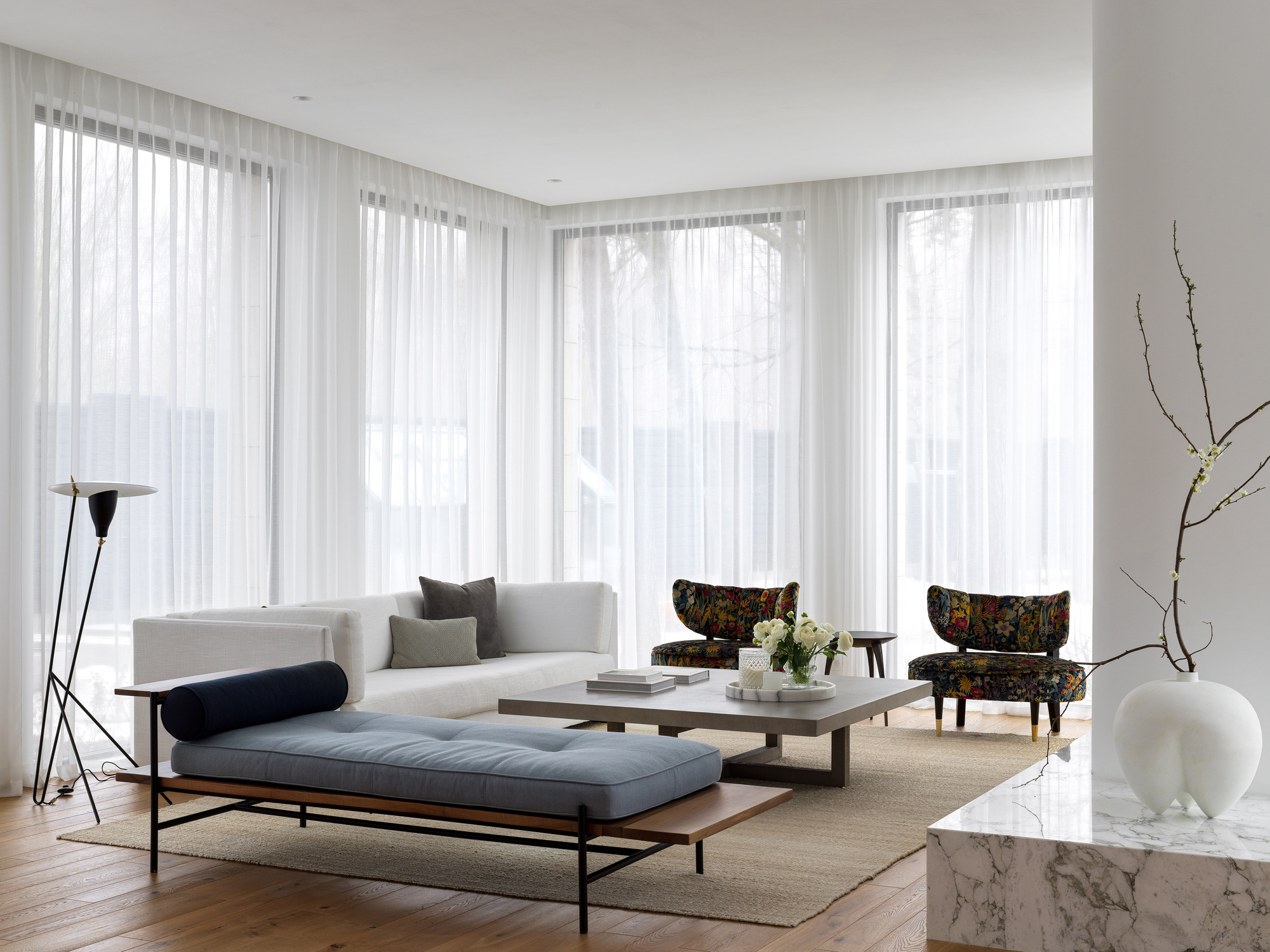
For a modern living room with lots of windows, low-profile furniture helps to ensure the space remains light and bright.
To ensure even a modern living room feels balanced, calming, and serene, opt for low-profile furnishings, like seen in the space shown above.
"The decision to keep the furniture low in this space was inspired by a desire to create a sense of openness and fluidity," explains Lada Shefler, founder of Shefler Interiors. "By maintaining a low profile, the furniture allows the architecture — especially windows and natural light—to take center stage."

Lada Shefler is a self-taught designer and the founder of Shefler Interiors. She's mostly guided by instinct (and a strong one at that) and has a keen eye for detail, and a commitment to continuous learning and exploration.
10. Layer Your Living Room Lighting
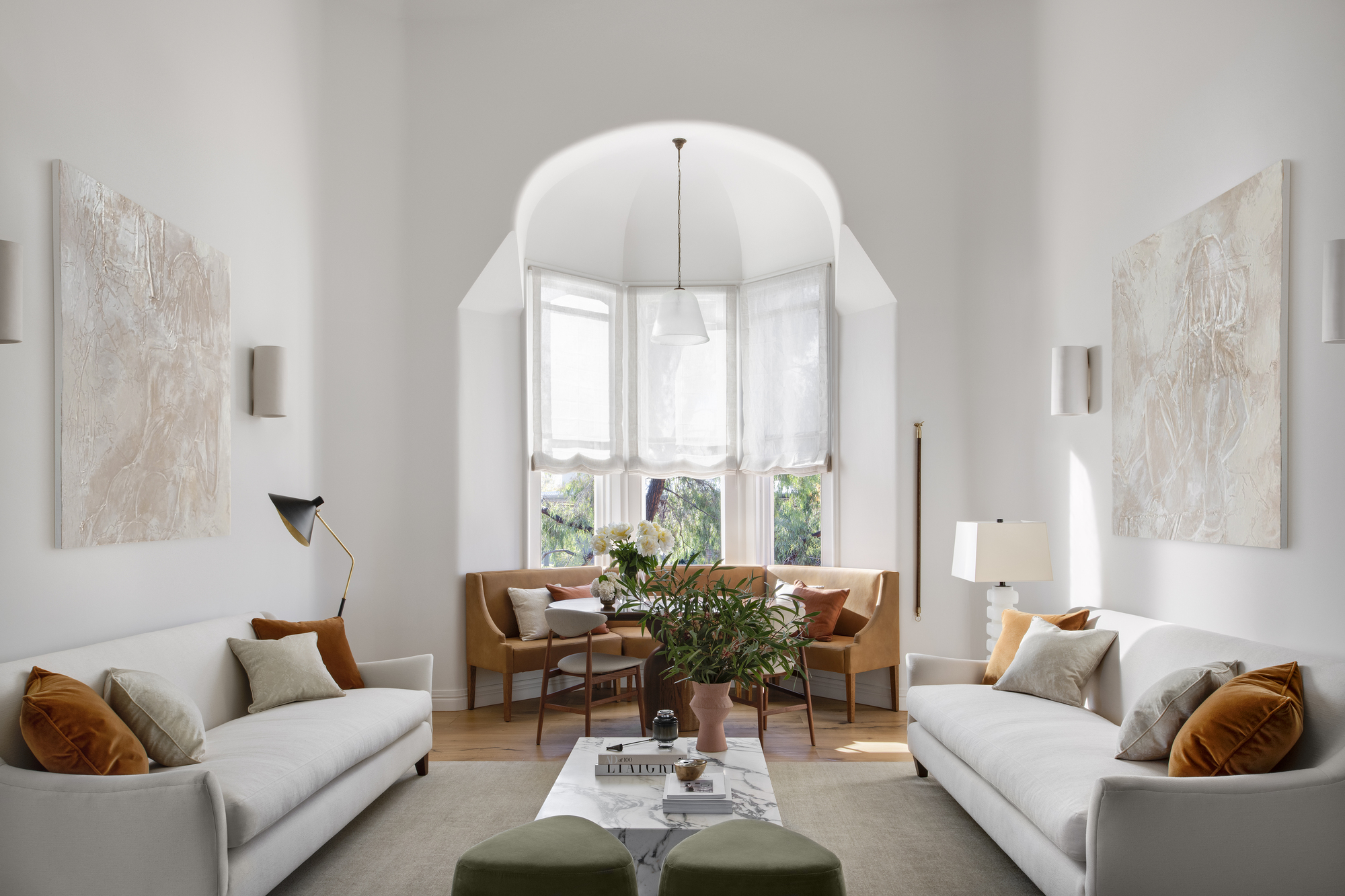
You should never rely solely on one light source, in any room. Layering is key.
A crucial element of any modern living room idea is understanding lighting. And knowing how to plan living room lighting isn't a one-size-fits-all situation, either. The best trick? Layers.
"Always layer your lighting scheme," says Emma Deterding, founder and creative director of Kelling Designs. "Dimmer switches are an absolute must in a living room, make sure you have plugs under sofas for table lamps in the middle of the room, and never put downlights in rows like a runway — they are there to illuminate things, not to decorate the ceiling."
In the modern living room shown above, a mix of overhead, pendant, and table lamps help to create a harmonious atmosphere.
11. Add a Home Bar Corner
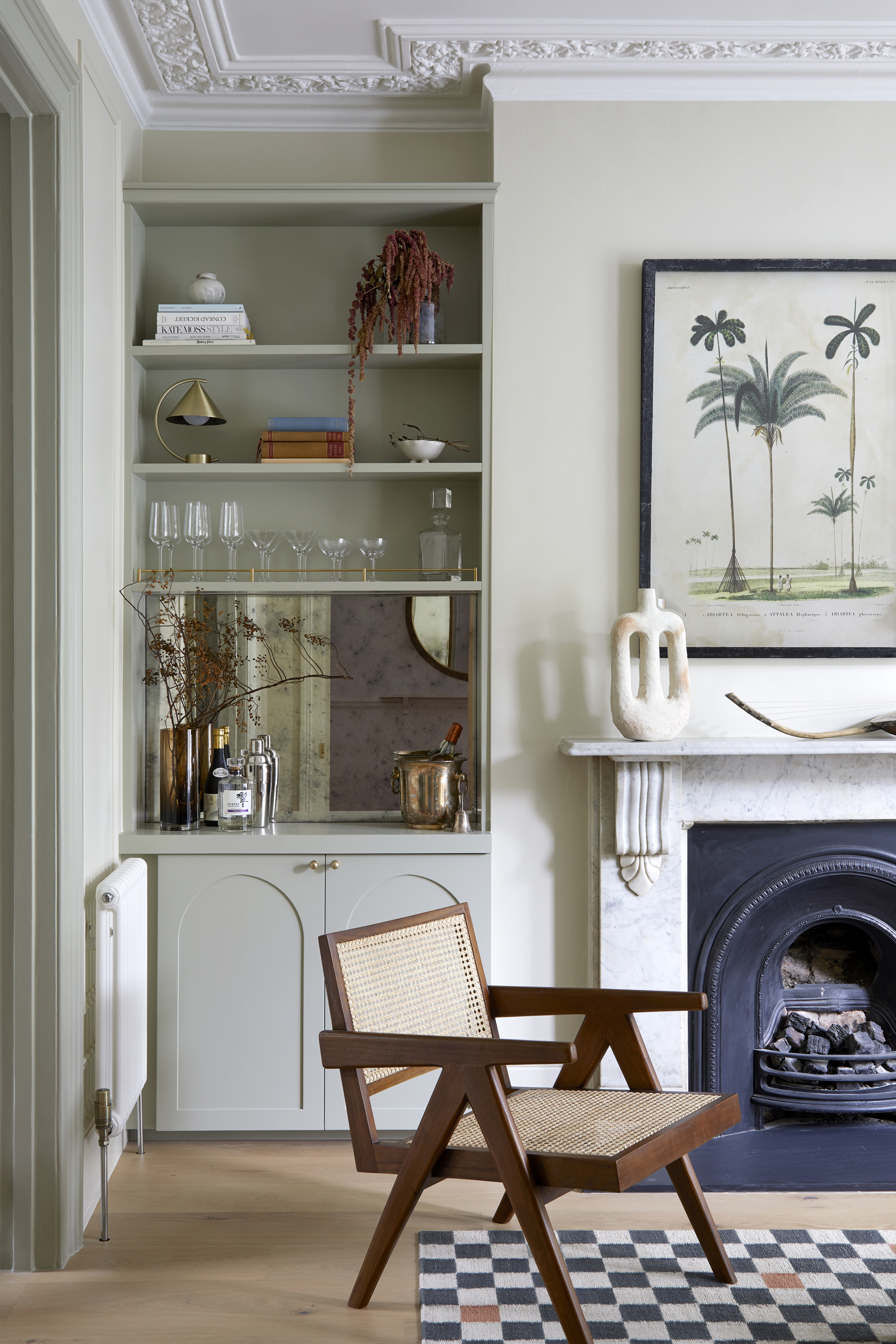
A home bar is modern living room idea everyone can get on board with.
The living room is likely where you’d want to relax with a cocktail after a long week — so why not bring the bar to you by transforming a small alcove into a stylish home bar idea, like Indie & Co did in this project?
"The clients were French and wanted to design a space where they could entertain before dinner for an aperitif; they also wanted to be able to enjoy a digestif at the end of a meal while listening to their vinyls away from the main family area, which is downstairs," explains founder Céline Erlam. "This was a grown-up space with a multitude of uses so they didn’t want the bar to be dominating, either."
12. Think of Lighting Like Jewelry

When it comes to lighting in modern living room ideas, this is a chance to add character and focal points.
Remember, elements like your living room lighting ideas don't have to be purely functional.
"I'm so glad that people are finally thinking of the ceiling as being as important as the rest of the room," says multi-disciplinary designer Lee Broom, who decorated this modern living room in his New York apartment. "Approach lighting as if it's the jewelry of the room."

Lee Broom is the UK's leading product designer. Producing furniture and lighting which can be found in hotels, restaurants, and homes across the world, he's won over 30 industry accolades, and draws inspiration from his background and studies in fashion design.
13. Connect the Space With a Large Area Rug
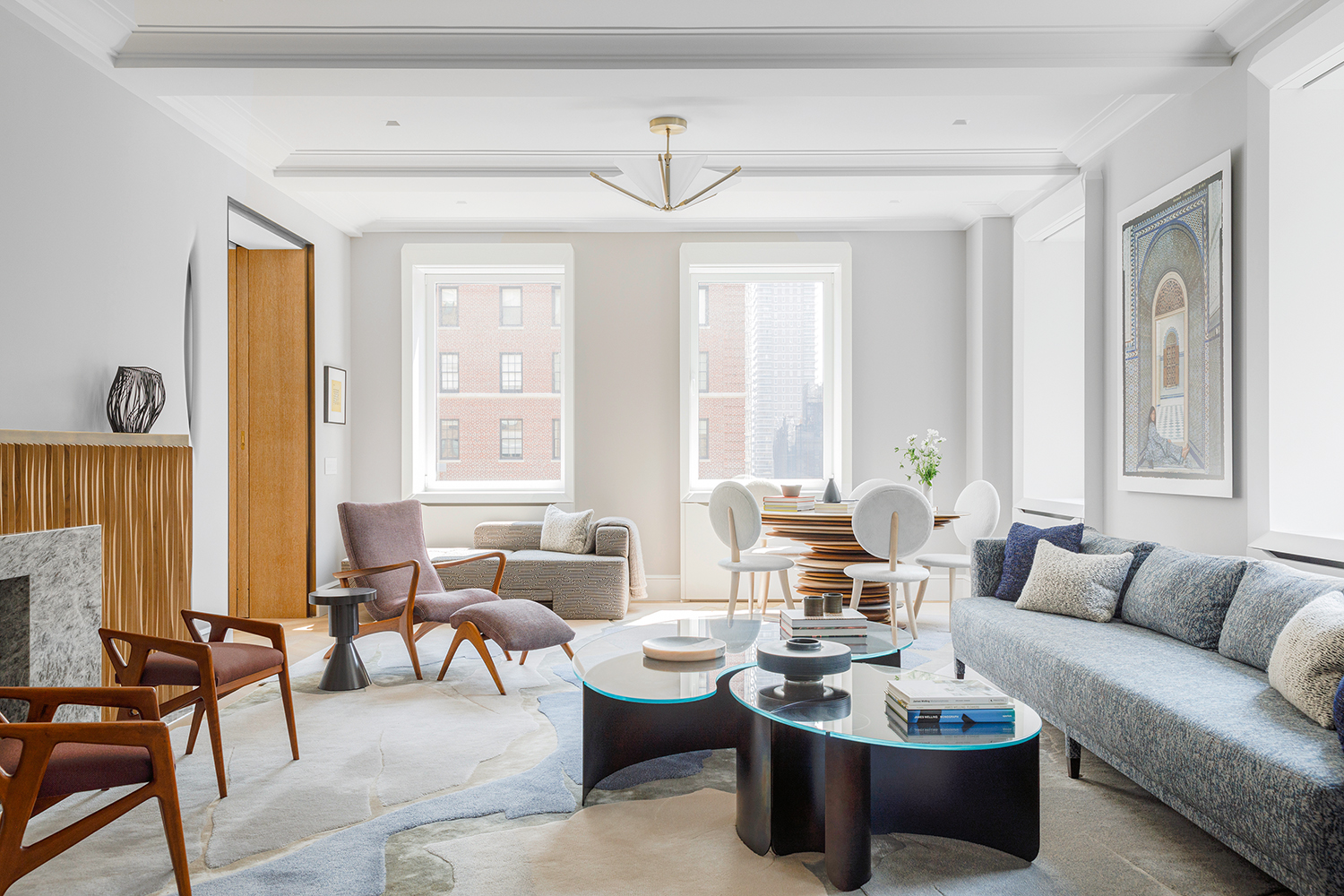
To make an open modern living room feel more cozy, connect the space with a plush area rug.
In order to make a larger modern living space with multiple zones feel more cohesive, one living room rug idea is to get a piece large enough that it sits under each piece of furniture in the space, subtly creating a sense of connection.
"We reshaped the apartment's plan to optimize circulation and the seamless transformation of the home from a series of private, independent spaces into an interconnected, spacious landscape where the family of five can gather together," shades Michael K Chen, principal of Michael K Chen Architecture, of the space shown above.
14. Do More With a Multifunctional Dual-Aspect Sofa

The best modern living room idea is one that functions around the way you live.
Living spaces are, as the name would suggest, the space we 'live' in most. So, it follows that we want to get the most out of it. Design studio Hines Collective achieved that in the modern living room, shown above, with a custom dual-aspect sofa positioned in the center of the space.
"You are able to watch TV on one side, while the other side wraps around to engage the adjacent built-in window seat, taking advantage of the stunning views of Manhattan," they explain. "What could have been a one-dimensional room now becomes a multi-purpose space that engages every corner and easily flows both aesthetically and functionally."
15. Create Clever 'Zones'
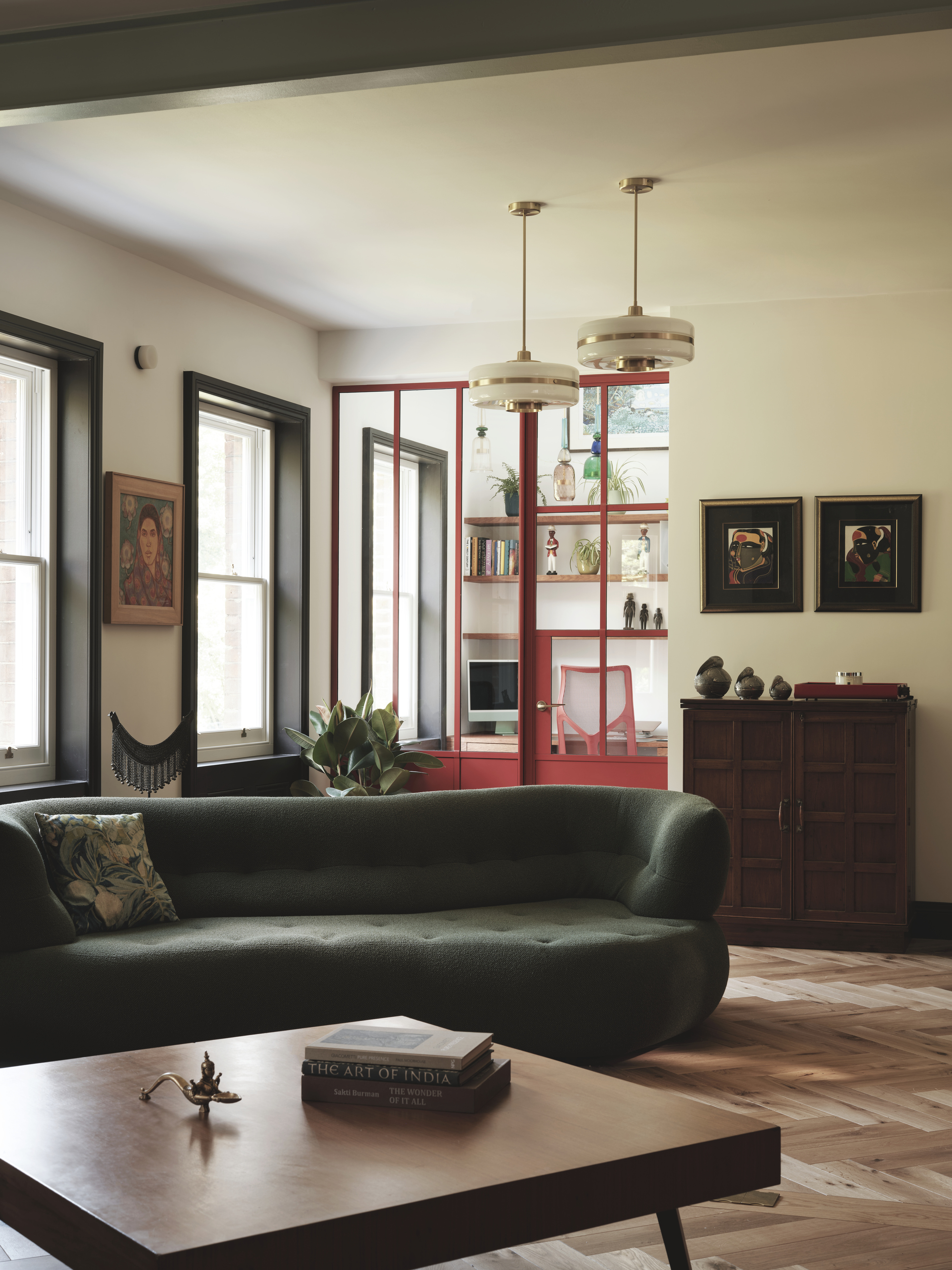
Modern living room ideas don't have to be bound by typical layouts and arrangements.
This home in Belsize Park by London architecture studio Bradley Van Der Straeten is a masterclass in zoning spaces; the living room leads to a double-height study, given its own sense of character, away from the main space’s moody hues, with red glazing.
The client isn’t accustomed to UK winters, says architect Vladimir Krastev, so "this space provides year-round brightness with two windows and a five-metre-high ceiling."
16. Sink Your Living Space
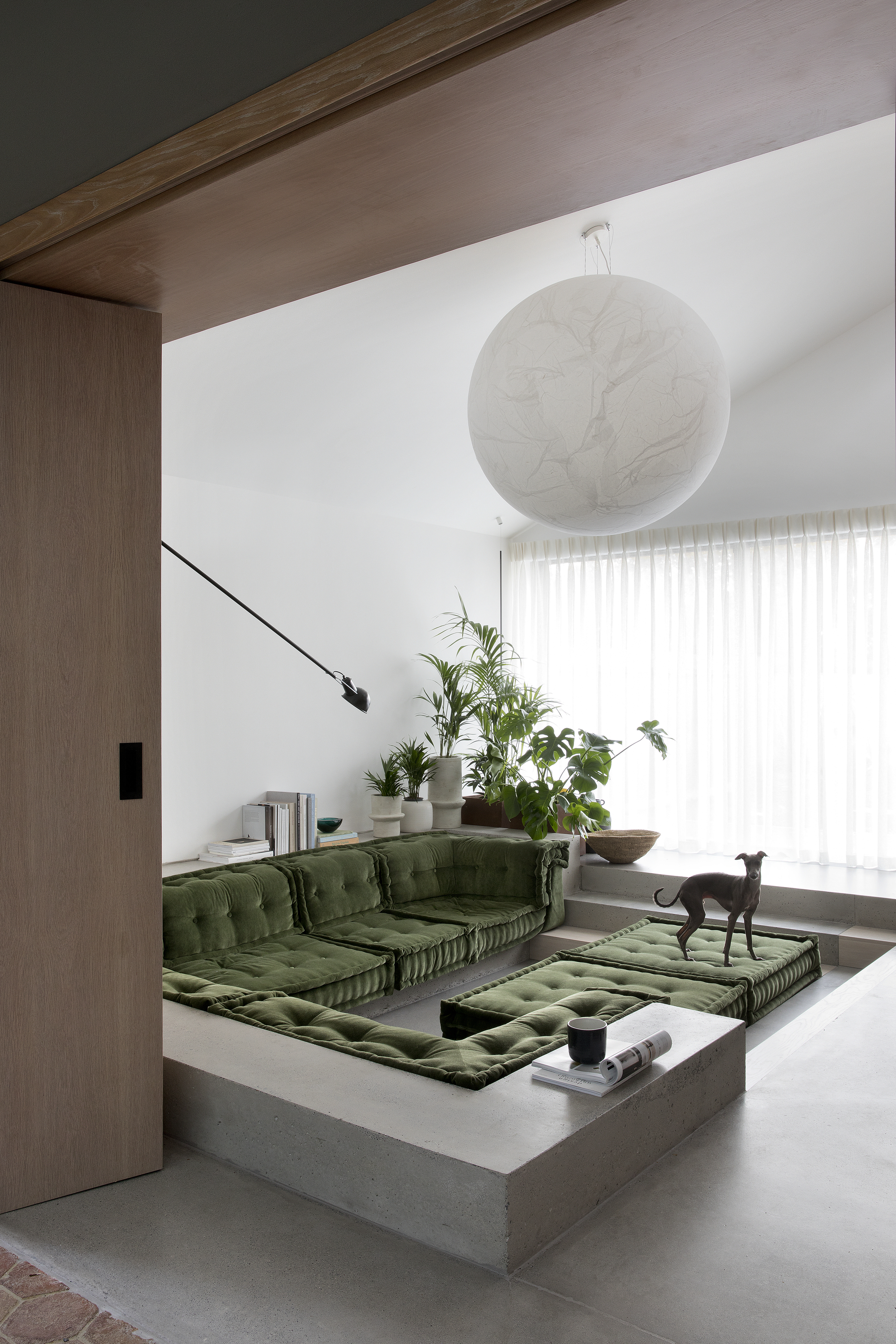
The best modern living room ideas think beyond the four walls — go up, out, or down.
Finding ways to embrace indoor-outdoor living is an aspiration of many these days, and one way to achieve it is through sightlines. "Sinking the seating area gives a clear visual link to the garden from the kitchen and dining spaces, bringing in light with no obstruction, as well having the view to the garden at eye level when seated," explains Róisín Lafferty, founder of Dublin-based studio, Róisín Lafferty, of this modern living room idea.
"We also wanted to create a hard-working and comfortable space that the family could all enjoy together," she adds. "The combination of the concrete, timber, and the soft fern green velvet on the Mah Jong sofa gives structure and durability with comfort and coziness to snuggle up and watch a movie or relax with a coffee and take in the view of the garden."
17. Promote Conversation Through Curves


"The beauty of this seating arrangement lies in its balance between intimacy and openness," says Scott Maddux of Maddux Creative, who designed the modern living room shown above. "By curving the sofa inward, we’ve crafted a natural focal point for conversation without it feeling overly structured. It’s about creating a space where people feel at ease, drawn in by the organic forms. The flow allows movement around the room, but the seating anchors the energy, encouraging spontaneous dialogue. It’s relaxed yet deliberate, just like the best conversations."
18. Split an Open-Plan Space with Shelving
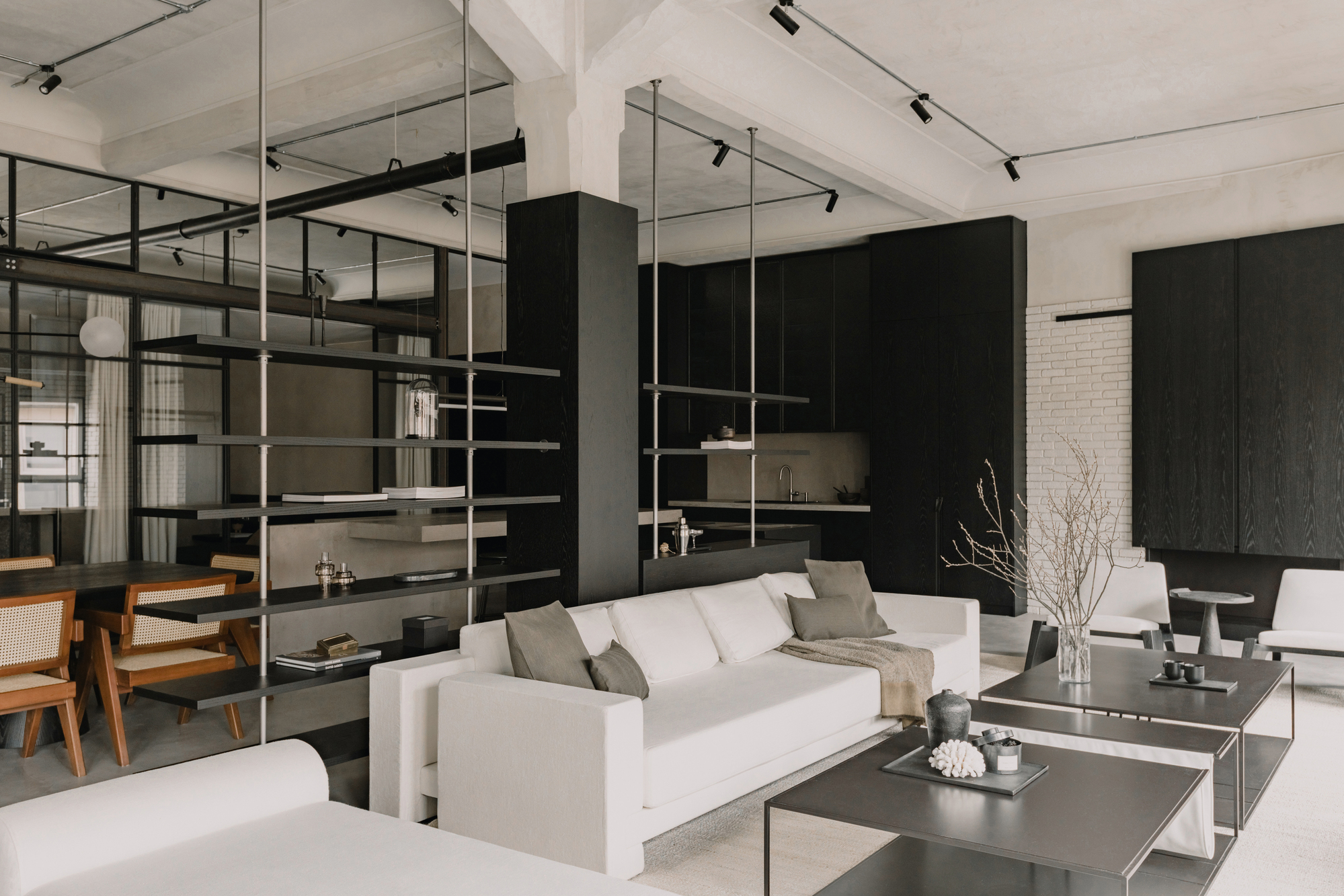
Open shelving subtly divides up this open-concept space, while also adding an element of functionality to the room.
Open concept spaces can be both a blessing and a curse when it comes to layout. How do you divide up the room without blocking the flow? For that, OZA Design, an architecture and design studio based in London, came up with a clever living room open-shelving idea.
"The open shelving behind the sofa was designed not only as a functional room divider, but also as an elegant cocktail bar tailored to the client’s lifestyle," Özge Öztürk, co-Founder and managing director of OZA explains of the monochrome, modern living room shown above. "Functionally, it defines the seating area while maintaining an open, airy feel, ensuring the space remains cohesive yet distinct."
FAQs
How can you make a living room more modern?
The term 'modern' can be a tricky one, because it refers to both an aesthetic and an era (anything designed today is considered 'modern'). But when looking for modern living room ideas that feel contemporary, it's best to focus on clean, simple lines and a design that's conducive with how we live today — open-concept spaces that mean you can talk to someone in the kitchen while on the couch, and comfy furniture that's all about casual comfort rather than formality.
And speaking of furniture, the pieces you choose have a lot to do with how modern a living space feels. Ironically, that doesn't mean you're limited to modern designs, either. In fact, it's the opposite. Today, one of the biggest tells of a modern living space is one that deftly mixes old with new, breaking expectations and 'rules', and creating spaces that feel truly personalized.
When it comes to modern living room ideas, a big consideration is finding ways to make it look sleek, but soft. For that, it's worth looking into the best cozy living room ideas that designers use.

Emma is the Interiors Editor at Livingetc. She formerly worked on Homes To Love, one of Australia's leading interiors websites, where she wrote for some of the country's top publications including Australian House & Garden and Belle magazine. Before that she was the Content Producer for luxury linen brand, CULTIVER, where she nurtured a true appreciation for filling your home with high-quality and beautiful things. At Livingetc, she spends her days digging into the big design questions — from styling ideas to color palettes, interior trends and home tours. Outside of work hours, Emma can often be found elbow-deep at an antique store, moving her sofa for the 70th time or mentally renovating every room she walks into. Having just moved to London, she's currently starting from scratch when it comes to styling her home, which, while to many may sound daunting, to her, is just an excuse to switch up her style.
- Ellen FinchDeputy Editor (Print)
